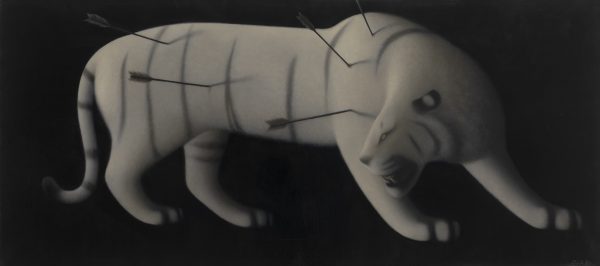Hive Center for Contemporary Art is honoured to announce post-90s artist Tan Yongqing’s latest solo exhibition, “The Lust of Gods”, opening at the Hive Shanghai space on 26 April 2024. Following “Cunning Moonlight” (2019, Hive, Beijing), “Day and Night” (2020, Mine Project, Hong Kong), and “Fantasy” (2022, Longlati Foundation), this marks Tan’s fourth solo presentation, focusing on new paintings and one large-scale sculpture he has created in the past two years. This exhibition is curated by Yang Jian and is on view until 18 June 2024.
Renowned as one of the prominent artists of the post-90s generation, Tan Yongqing reveals his unique comprehension and perspective on the virtual world and artificial intelligence introduced by technological advancement through his creative approach to painting. Contrary to many artists of his generation, Tan’s paintings tend to be classical, elegant, and refined, imbued with a strong sense of discipline, barely embracing the use of vibrant and striking digital colours. When this age of technology generated unprecedented palettes, which have in turn started to monopolise and regulate the visuals of this era, Tan has remained vigilant as a painter and always expressed his ideas and artistic beliefs with the most minimal colours. When the boundary between reality and the virtual world became increasingly obscure, he began to reflect on the consequent anxiety and disturbance, examining through his work the possibility of AI’s impact on human society and the course of history. Despite growing up in the age of the Internet, the intimacy that electronic products bring to Tan Yongqing has become a continuing part of his body and organs. While he enjoys the thrill of video games, he rejects the idea of his creative practice being plunged into the technological quagmire of vanity.
In his most recent works, the synthesis of ancient gods and AI machine figures serves as Tan Yongqing’s narrative medium to contemplate the distant past and future of humanity. In his perspective, the end of AI is the beginning of the emergence of the gods. When humanity was still in its formative years, we could not distinguish whether the gods manifested themselves in their true form or as the projection of artificial images. But with the rapid development of technology, it no longer remains a myth that AI might be a god or soon evolve into one. The fabled gods are in fact in control of the world’s infrastructure, from transportation, banking to nuclear power plants; theoretically, the expectations and fears of humanity exist wherever there are smart machines. Besides, greed has always been the nature of humanity; once we are able to transcend our biological limitations, even a devil created by the combination of the flesh with contemporary technology would be considered a singularity in the evolution of civilisation. Yet, Tan’s works are not a purpose and attempt at moral judgment. In contrast, he was profoundly influenced by Nietzsche’s concept of Apollonian and Dionysian and existentialist philosophy as he quietly and patiently observed the situation of humanity in the midst of the technological vortex from a purely aesthetic perspective, with a calmness that is beyond his years.
The journey and homecoming of heroes is an eternal narrative of humanity and also an everlasting, moving element of Homer’s Iliad. Similarly, adopting the humanism of anthropomorphism as the dimension and objective for things, Tan Yongqing portrays the figures and personalities of his fictional gods. The departure of the gods and the advent of smart machines might just be a duet. Thus, the figures Tan created are neither cold-blooded smart machines nor immaculate deities: the gods are not removed from secular humanity, nor are the smart machines assigned sublime divinity, more often than not, they share the same complex and contradictory sentimentalities and even incomprehensible and twisted lusts as humans. Tan engages in subject matter arguably grandiose; but with an almost nuanced and warm approach to narration, he organically integrates the gods of the past, the people of the present, and the smart machines of the future along with the humanistic context and the logic of science and technology, creating an image of humanity history’s cycle of development. Nietzsche believes that power softens and descends into the visible, such descent is considered as beauty. More than reflecting on human nature, sentimentalities, and existence, perhaps, Tan Yongqing simply provides a naïve yet poignant fable. The gods are on their way.
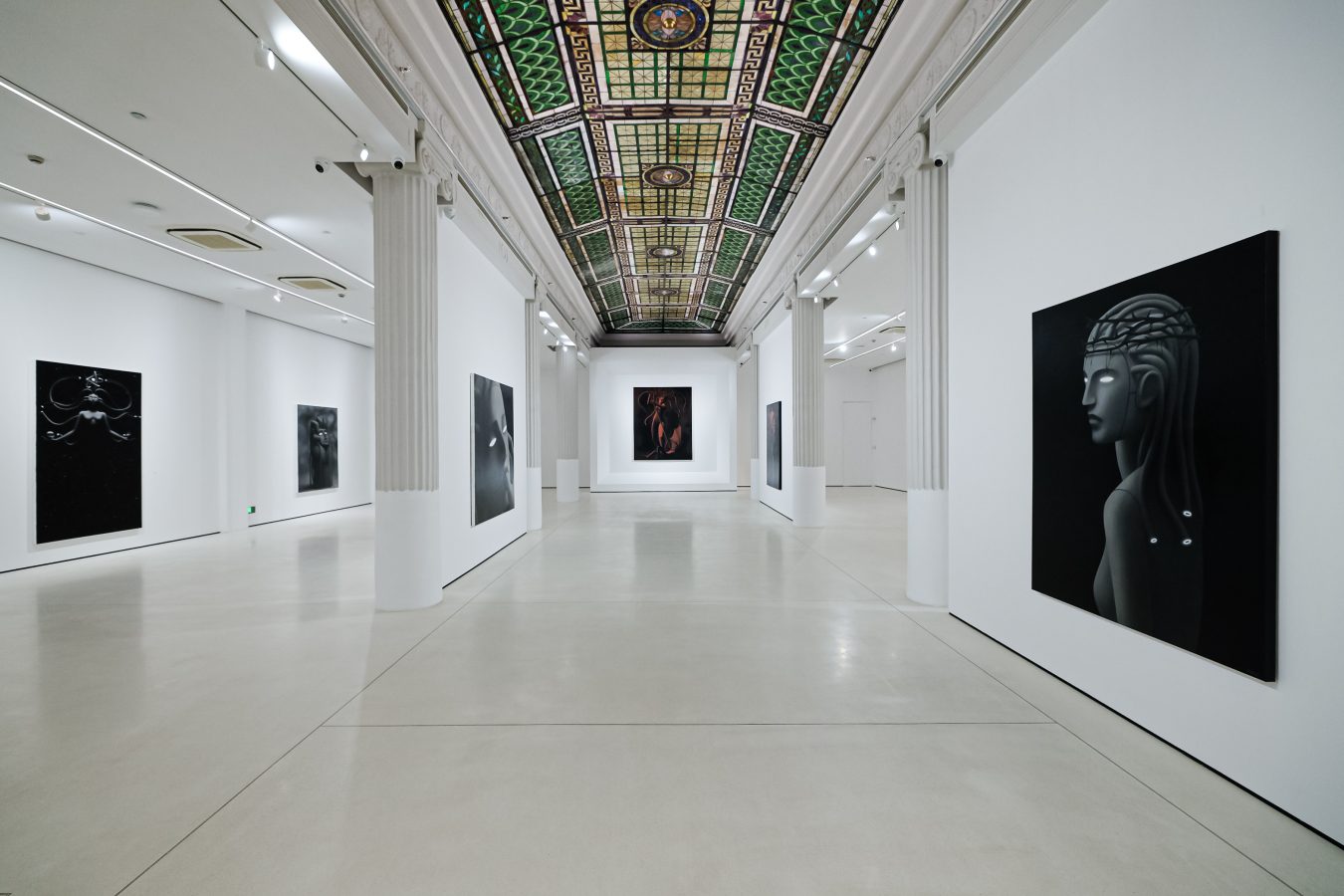

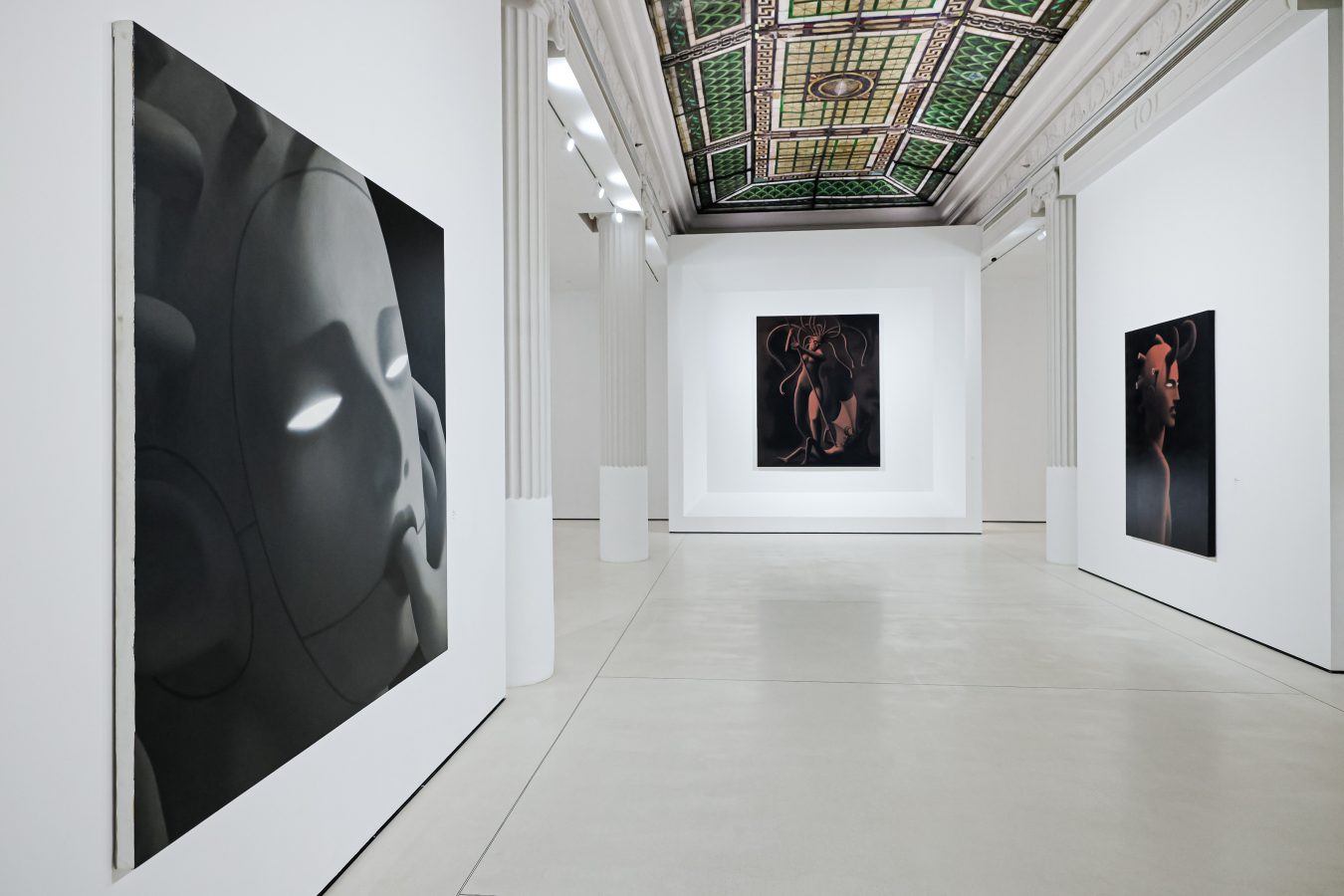


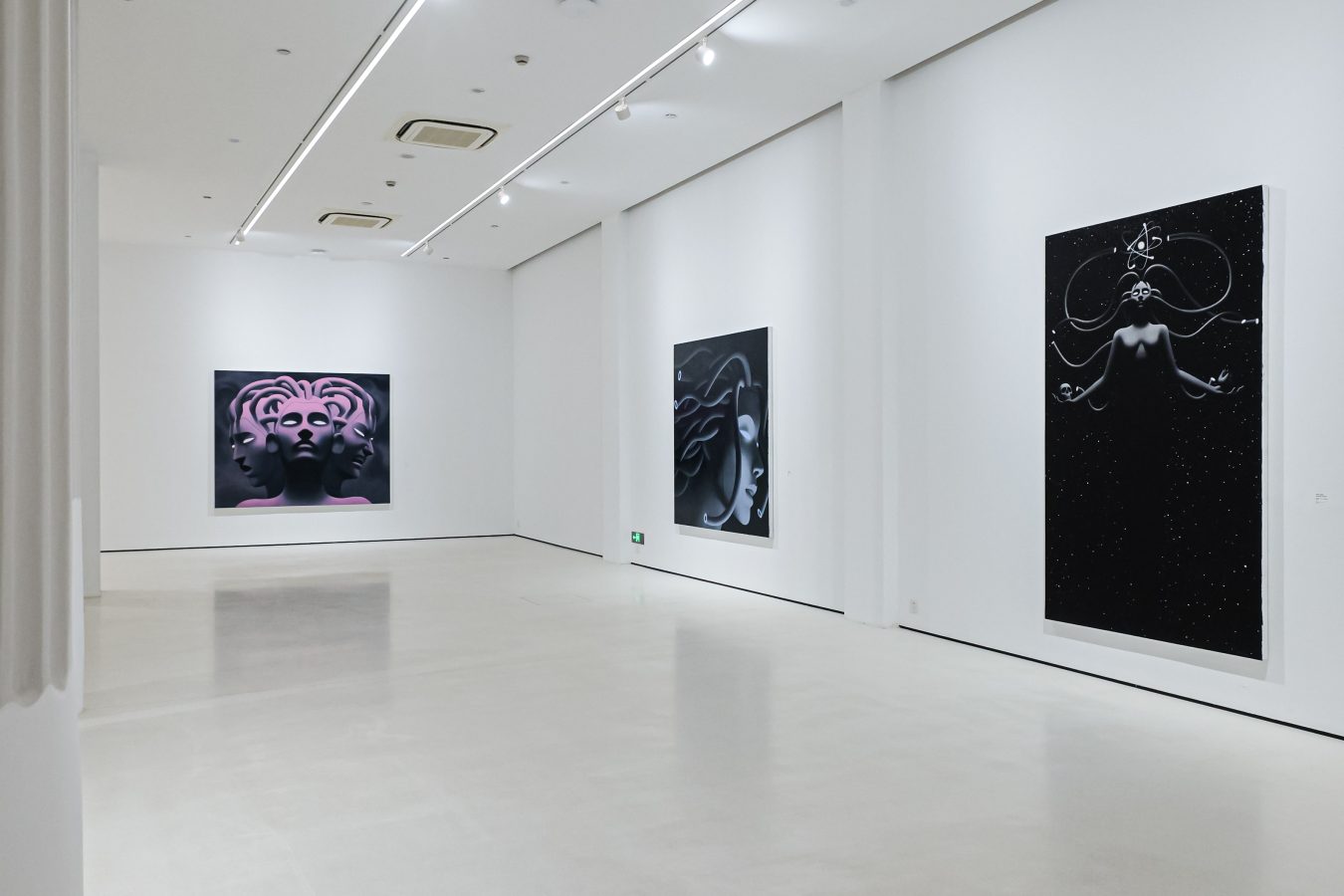
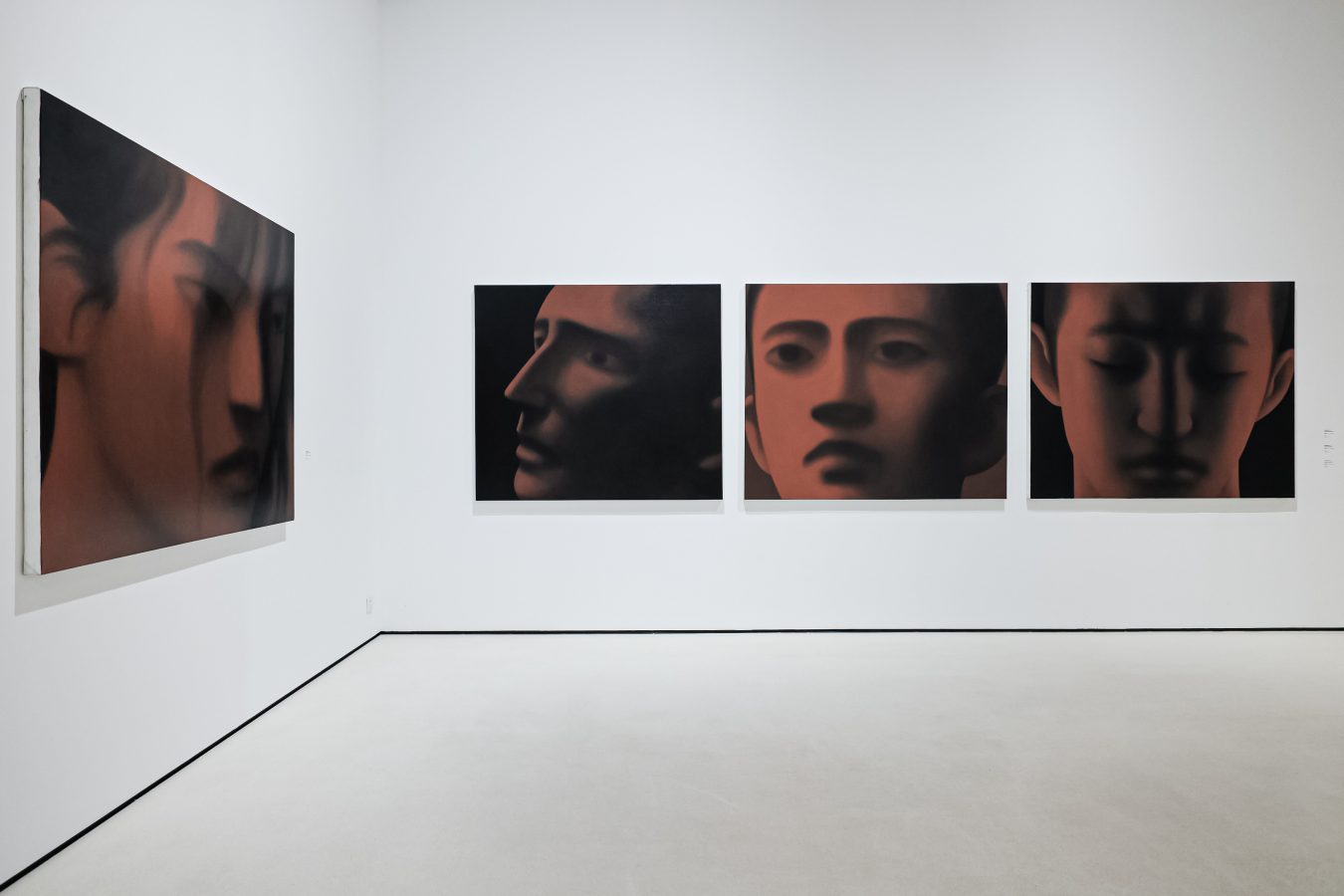
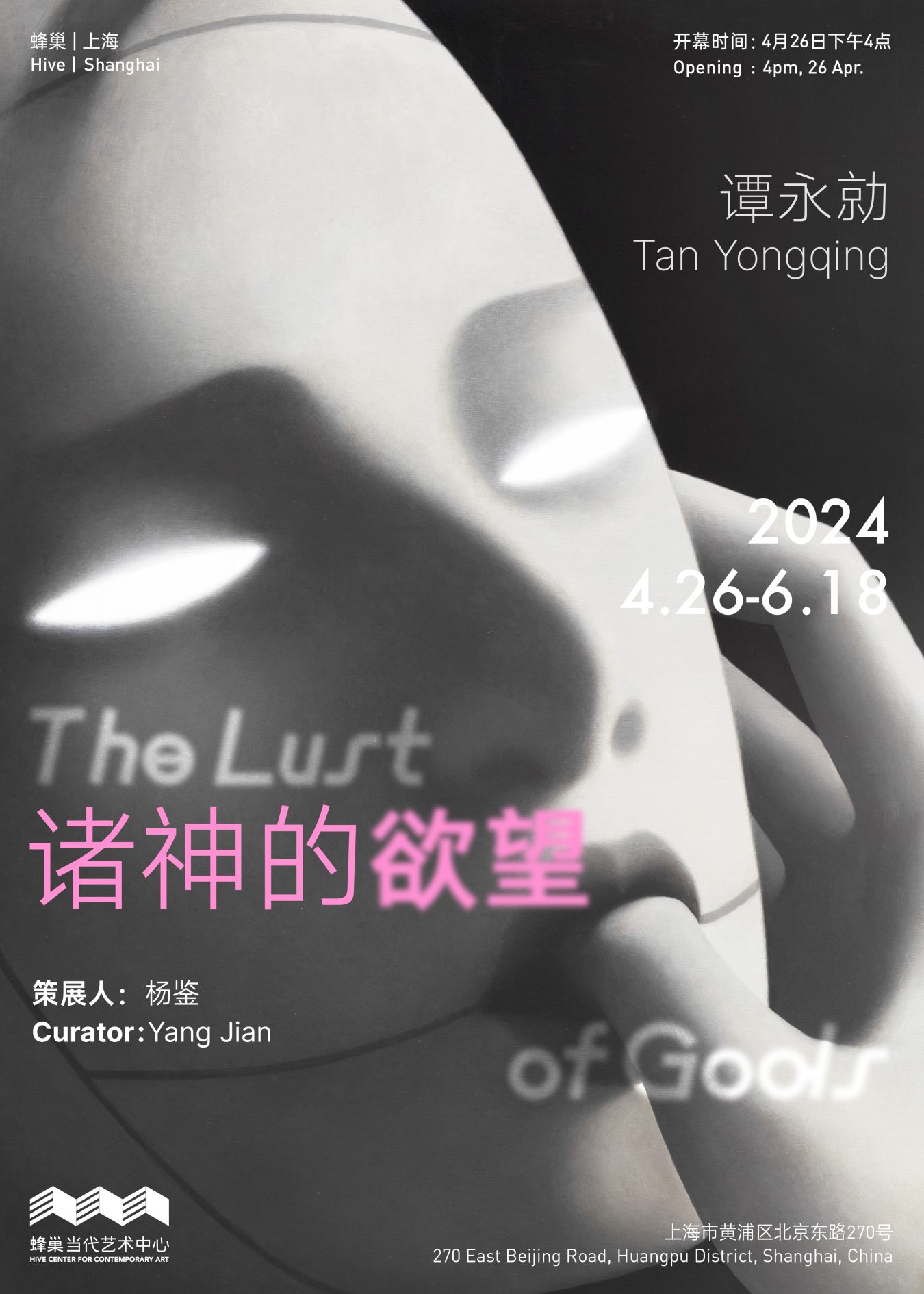
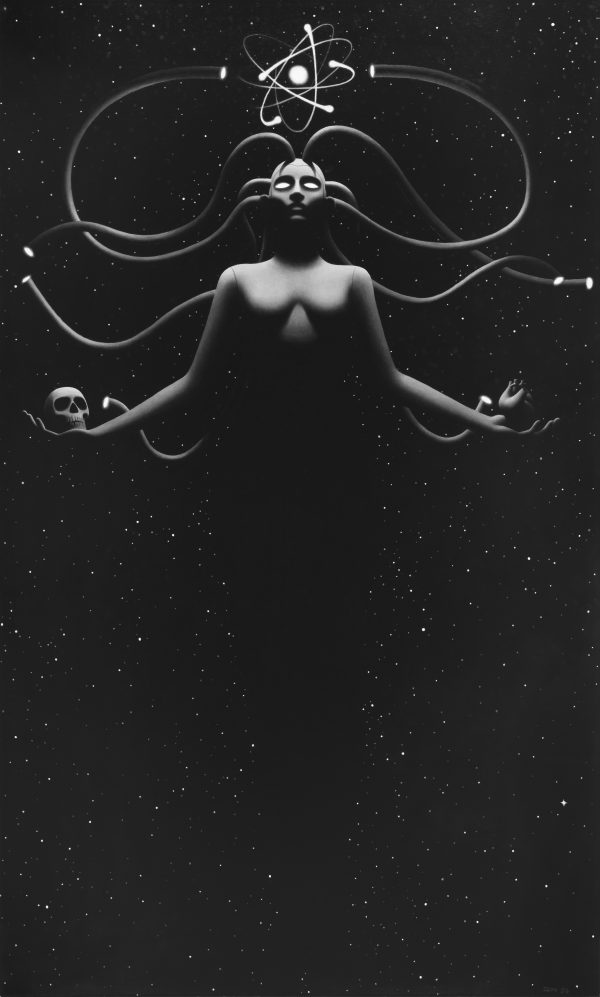

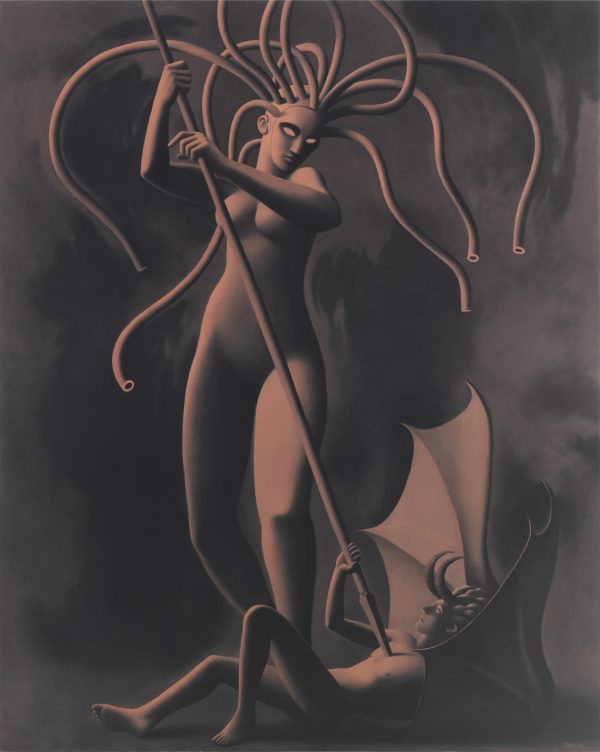
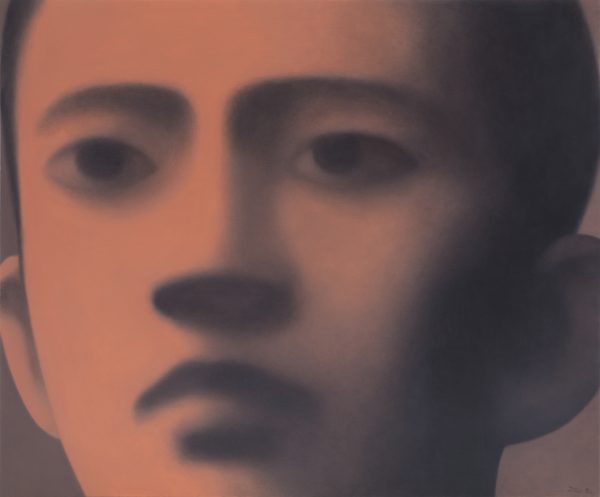
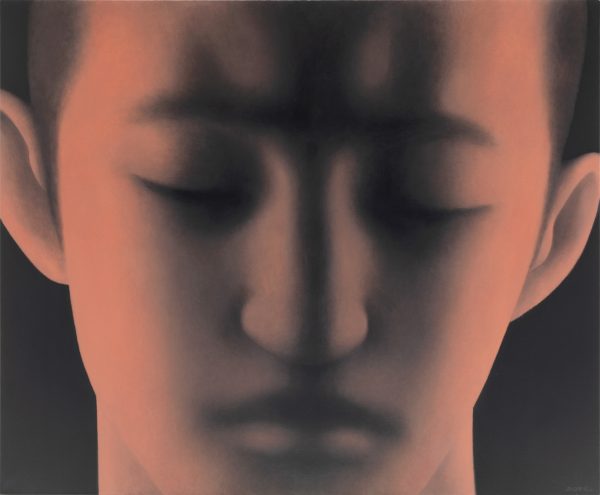


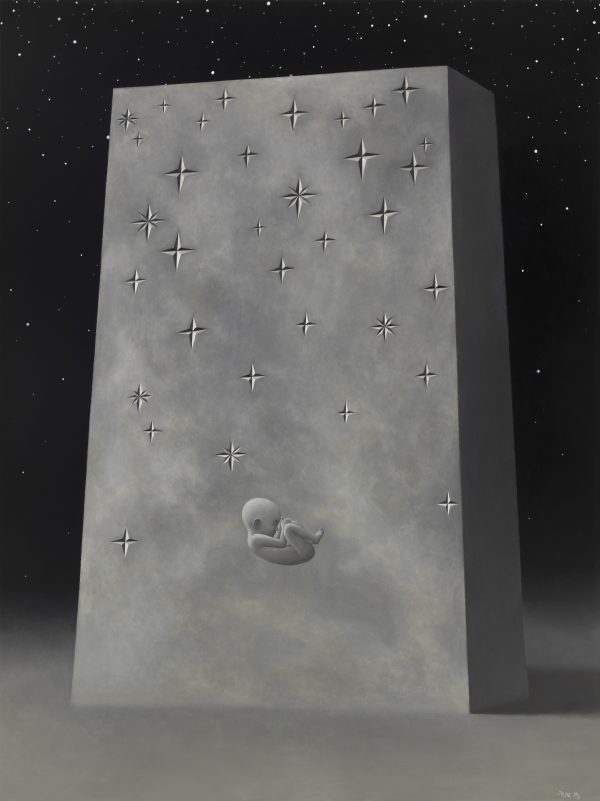
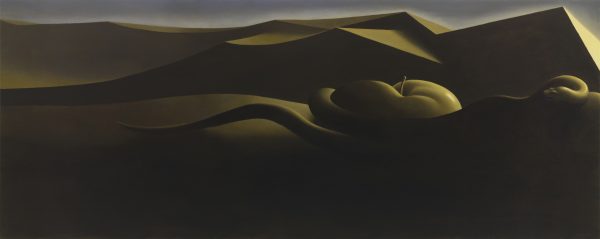
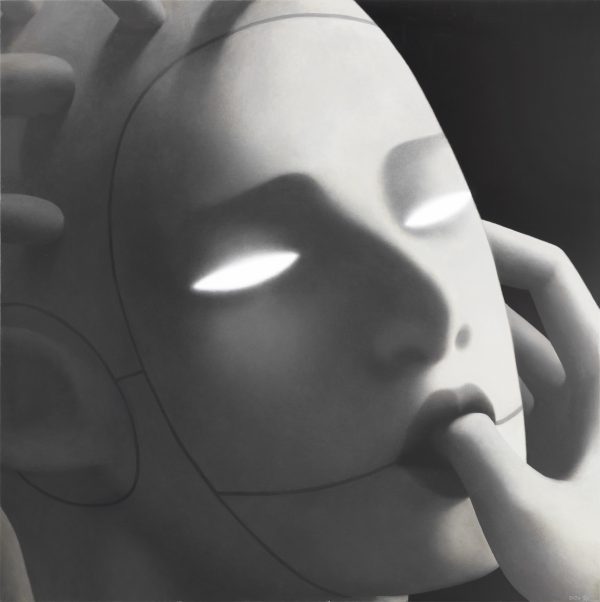
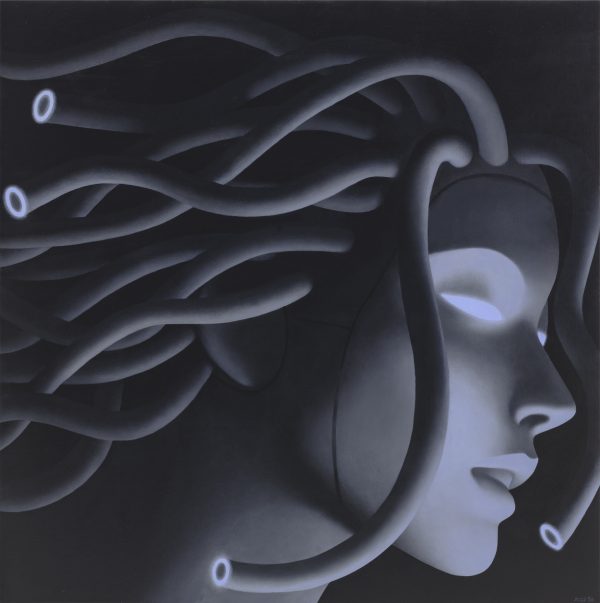
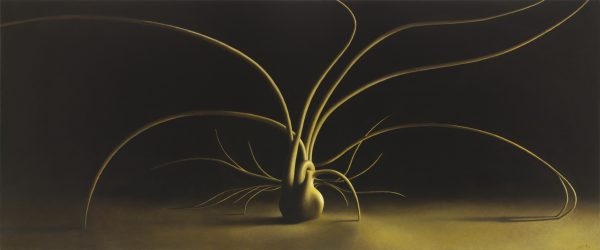
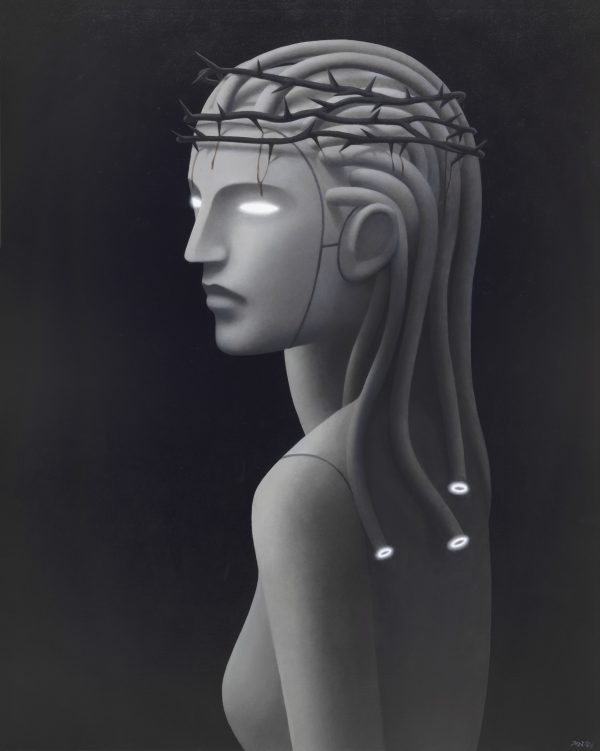
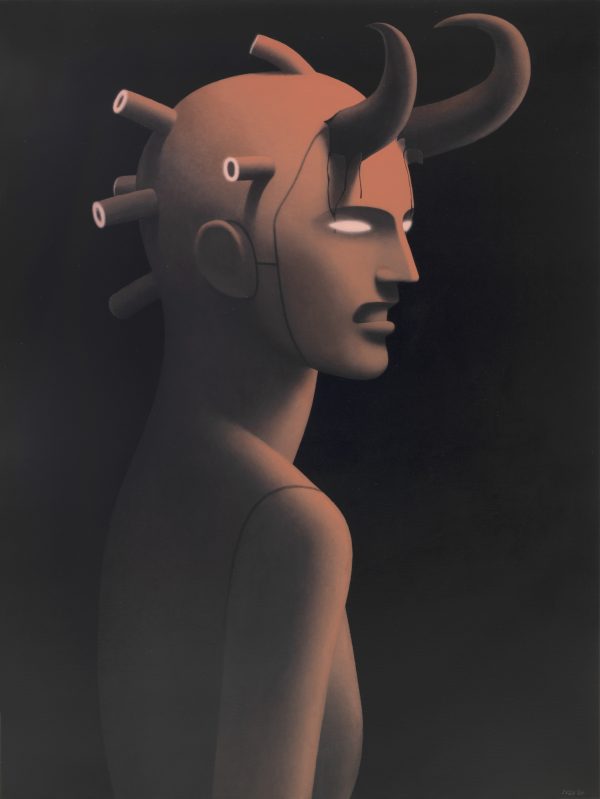
谭永勍-机器人总是在掌控中觉醒-Awakening-2023-布面油画-200×150cm-2-600x801.jpg)
